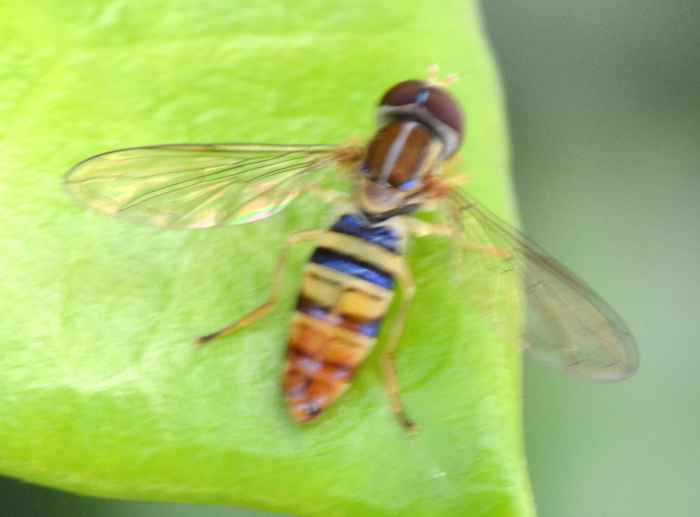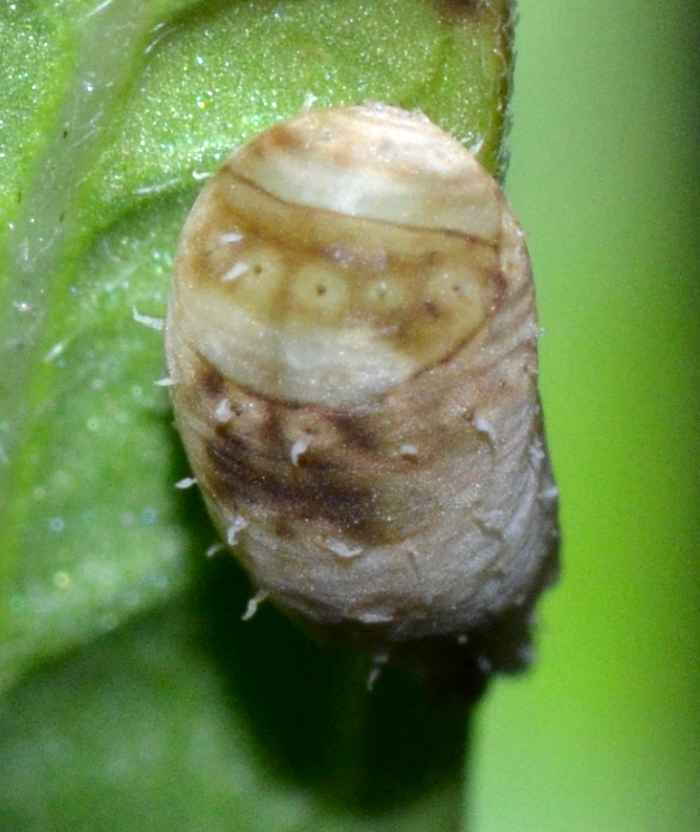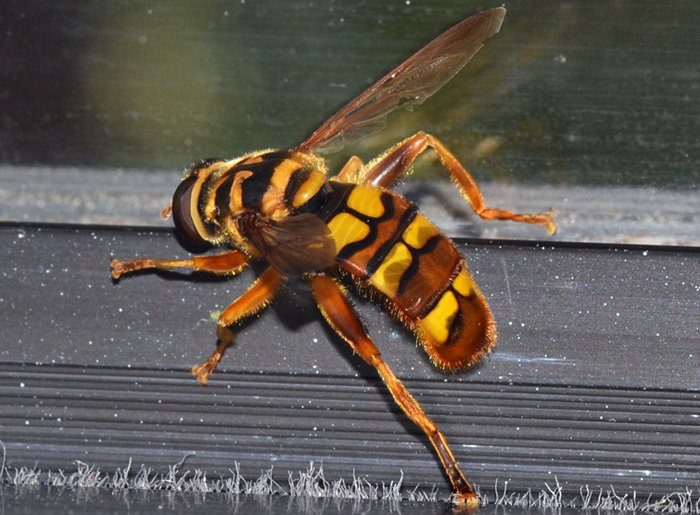 Milesia virginiensis (Yellowjacket Hover Fly). | Since we have yellowjackets, I was pretty convinced that this is one of those dangerous fellas. However, it turned out to be only a big hover fly that mimics the Southern Yellowjacket. Citing from the field guide by Eaton&Kaufman: "Flies aggressively and buzzes like a hornet. In the south, sometimes called the '[good] news bee' for its habit of hovering in front of a person "giving the news". It is also said to be good luck if one can get the insect to perch on a finger, no doubt because this is difficult to do."
bug guide (this photo): https://bugguide.net/node/view/1730385 | |
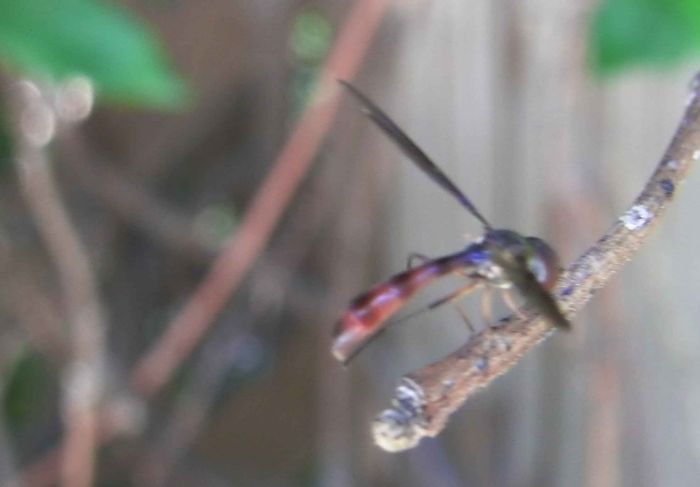 Ocyptamus fuscipennis (Hoverfly). | I watched this small hoverfly for 10 min plus and it is quite a nervous insect. It looks like it wants to land somewhere but then takes off again. I never got a really good shot. Anyway, this is Ocyptamus fuscipennis. There seems to be no English name for this little fly. The photo below shows a top view of what I believe to be the same individual. bug guide: http://bugguide.net/node/view/43727 | |
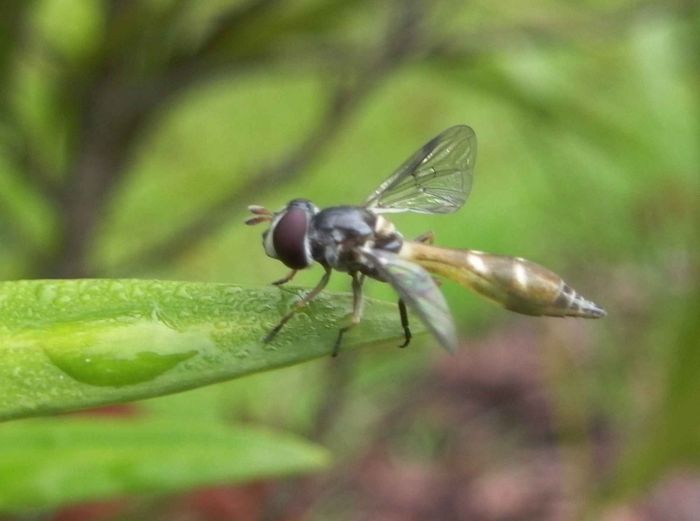 Pseudodoros clavatus (Hoverfly). | This small hoverfly is Pseudodorus clavatus. Under lab conditions, males and females live an average of 17 and 30 days, respectively. bug guide (this photo): http://bugguide.net/node/view/534219 Belliure and Michaud, Ann. Entomol. Soc. Amer. 94, 91 (2001): http://alturl.com/boe95 | |
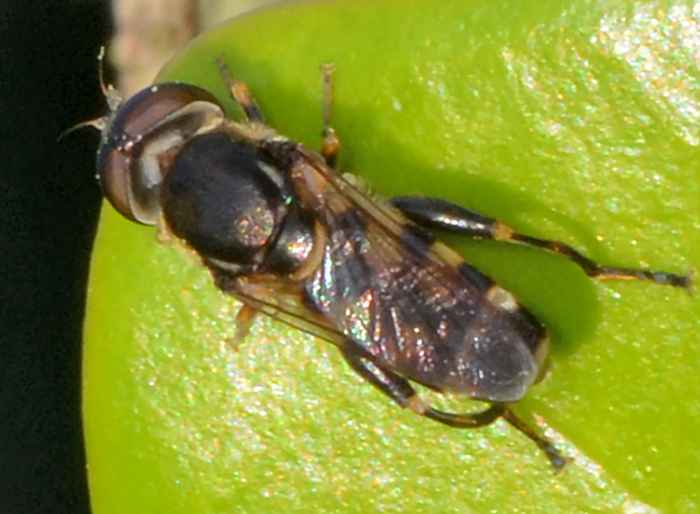 Syritta pipiens ♀. | Syritta pipiens is a common syrphid fly and can be found in wide parts of the US especially in fields and grasslands with flowers. It is one of two North American species but the other one S. flaviventris occurs only in Texas and Mexico. bug guide (this photo): http://bugguide.net/node/view/634773 | |
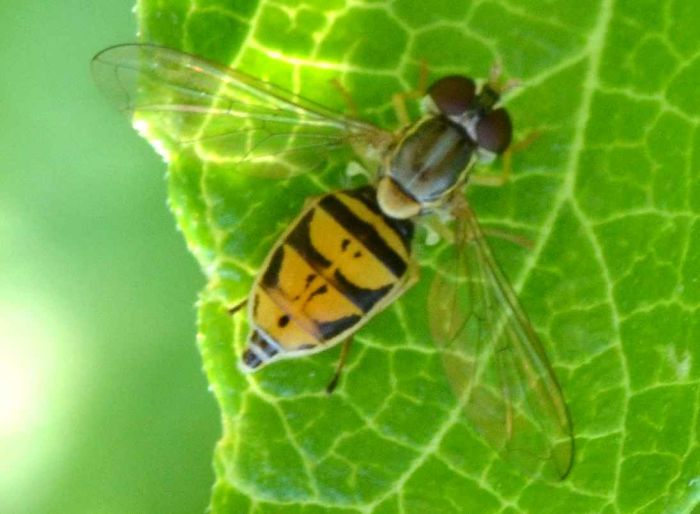 Toxomerus marginatus (Small Syrphid Fly (nonspecific)) ♀. | This very small hoverfly (Toxomerus marginatus) is quite common and often found visiting flowers of herbaceous plants. Since the larvae are predators of aphids, Toxomerus species are considered beneficial insects. The tip of the abdomen is pointed (rounded) in female (male). Hence, this must be a female. To my eyes the fly had a reddish glow. bug guide (this photo): http://bugguide.net/node/view/558088 | |
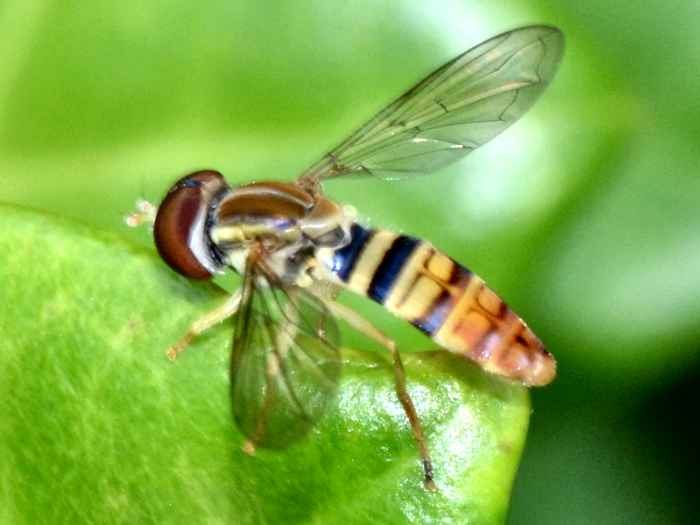 Toxomerus politus (?) | This Syrphid Fly belongs to the genus Toxomerus and might well be T. politus. However, there are numerous species in Florida and the reliable identification is difficult or impossible from typical photos. T. politus is much less common than T. marginatus and T. geminatus.
bug guide (these photos): http://bugguide.net/node/view/568387 Canadian National Collection of Insects, Arachnids, Nematodes: http://www.canacoll.org/Diptera/Staff/Skevington/Syrphidae/Toxomerus/Toxomerus3.jpg | |
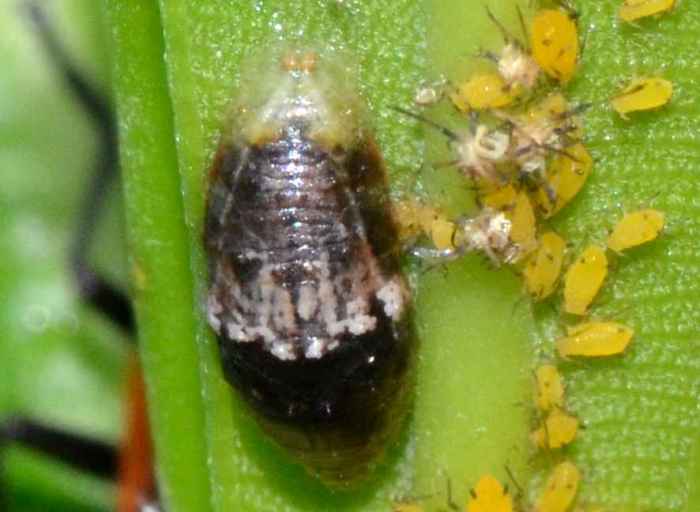 Unidentified (Syrphid Fly Larva and Pupa) - imm. | The large photo shows a predatory larva of a hoverfly. It most likely feeds on the yellow oleander aphids. The small photo was shot on 08/22/11 (8 pm) at a different location in my yard. It shows a hoverfly puppa.
bug guide (this photo): http://bugguide.net/node/view/568680 bug guide (small photo): http://bugguide.net/node/view/567337 |

